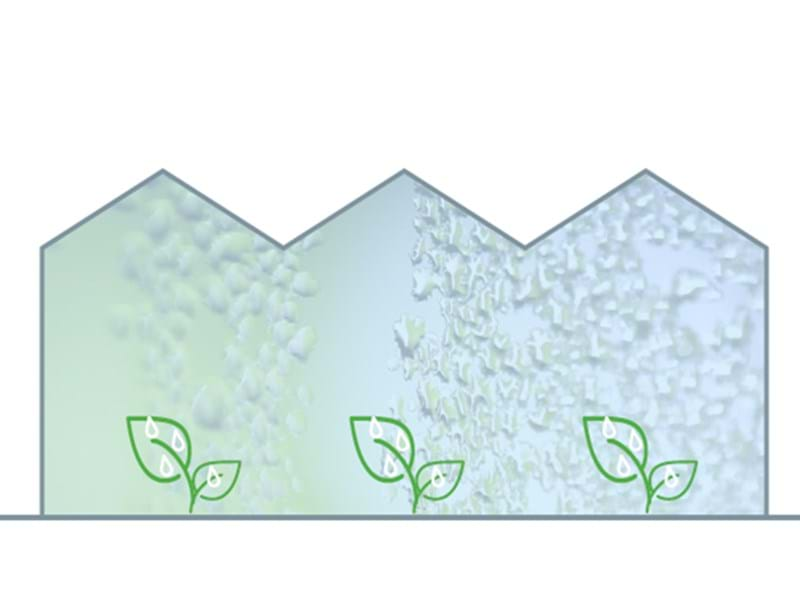The Basics of Greenhouse Climate Control
Plant growth and development is a complex process, strongly influenced by the greenhouse environment. With the right of conditions, you can achieve the best possible climate for your plants and your business.
Essentially, the climate inside a greenhouse consists of temperature, humidity, light intensity, and CO2 concentration.
These elements are influenced by:
Outside conditions: radiation, cloudiness, temperature,
humidity, rain, and wind speed
Greenhouse conditions: ventilation, heating, screening, lighting
Plant conditions: transpiration

Outside conditions are unchangeable, and plant transpiration is the result of countless influences. However, greenhouse conditions can be managed and controlled more easily. Many of the variables influence one another.
Factors that influence plant growth

1. Photosynthesis
The plant picks up carbon dioxide from the air, which, together with water, creates carbohydrates and oxygen. The right levels of light, carbon dioxide, and temperature are the key factors.
2. Respiration
The plant transforms some of the carbohydrates into free energy used for maintenance processes. The remaining carbohydrates turn into plant tissue. The respiration process is highly dependent on temperature.
3. Transpiration
Controls the water, nutrition uptake, and cooling of the plant. Sufficient transpiration enables the leaf to maintain the right temperature and develop a strong metabolism. Light intensity, temperature, and humidity are the key factors.


